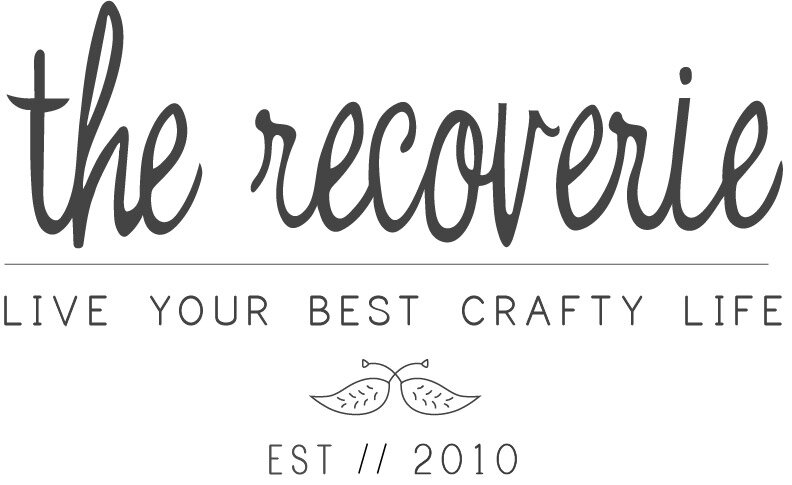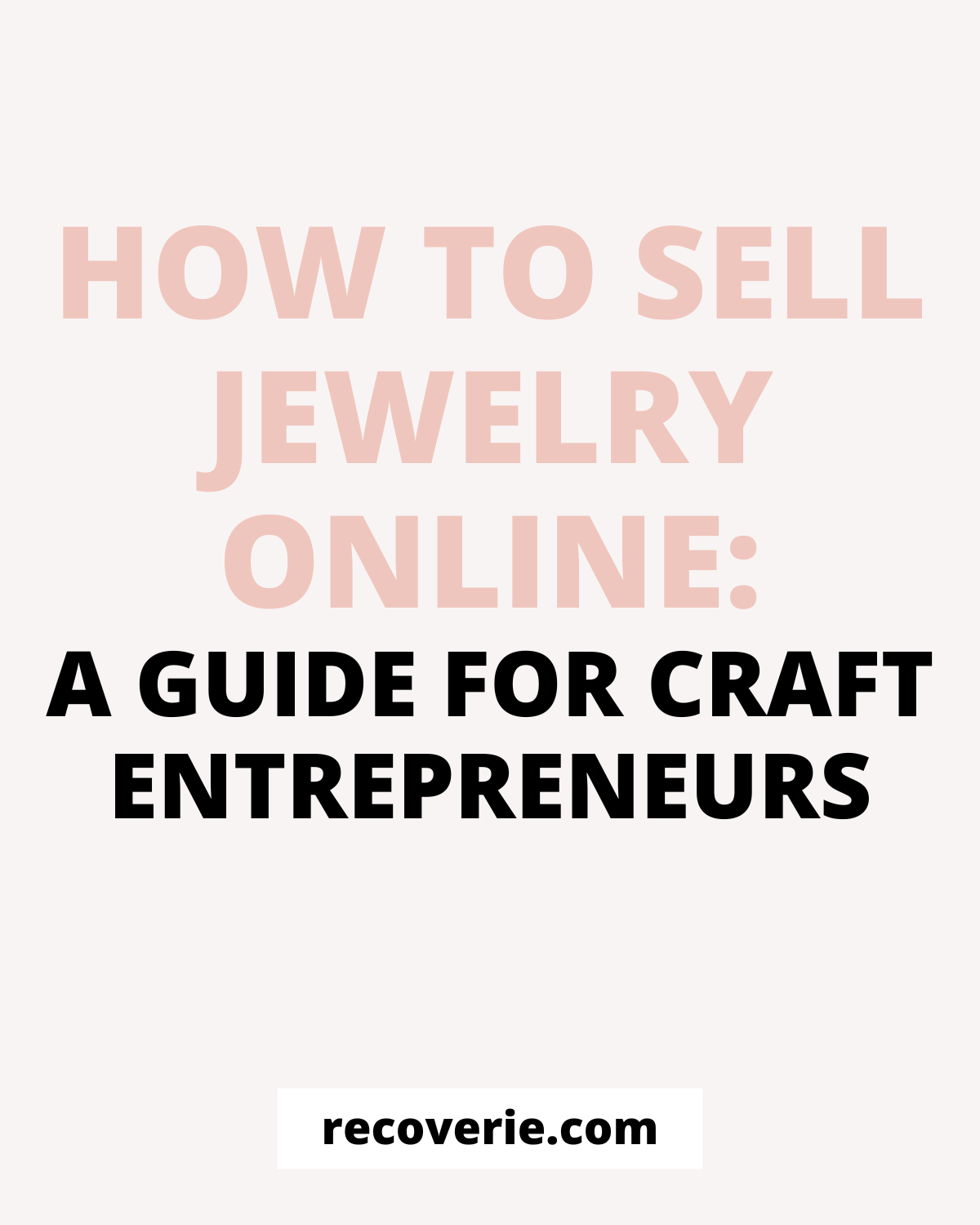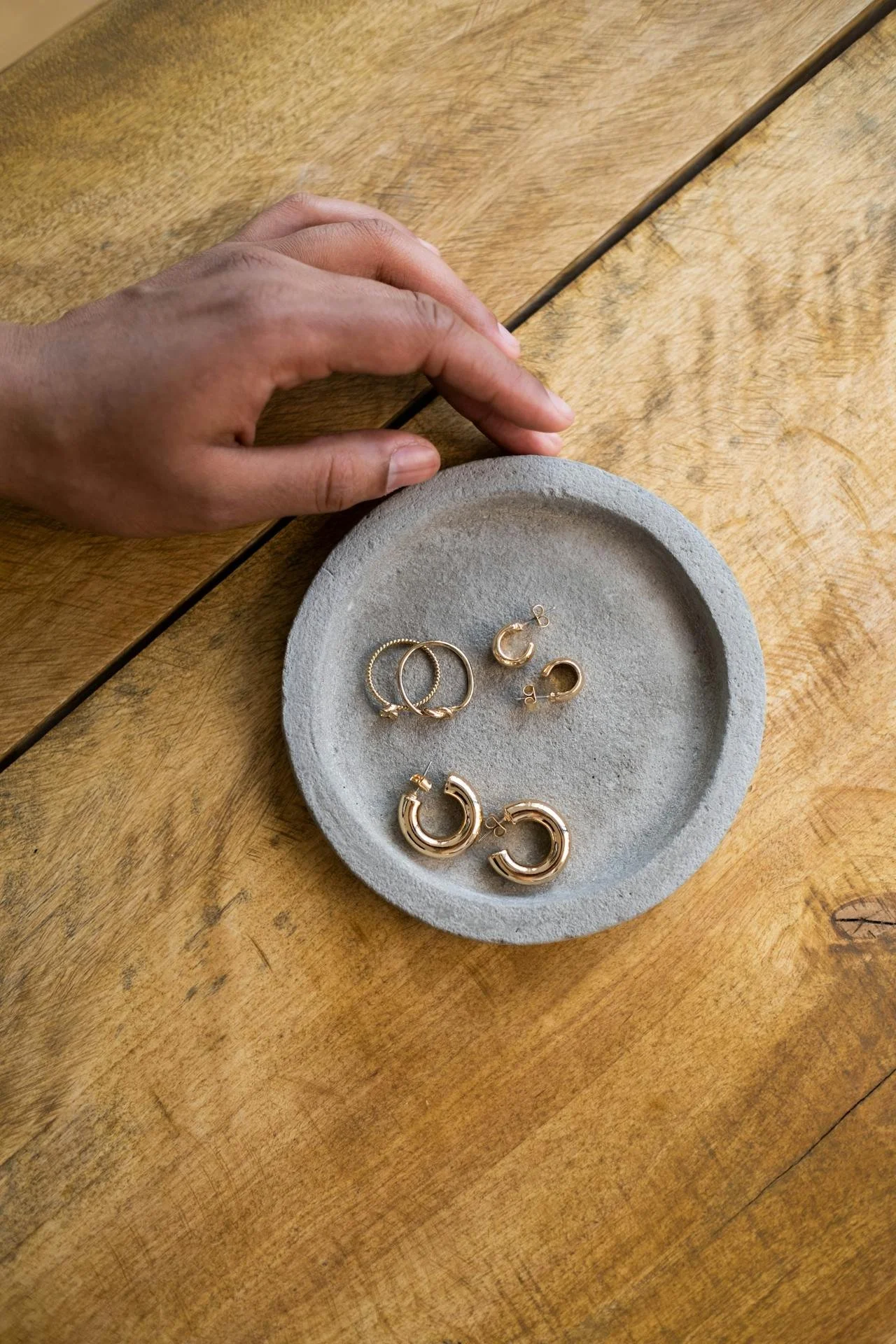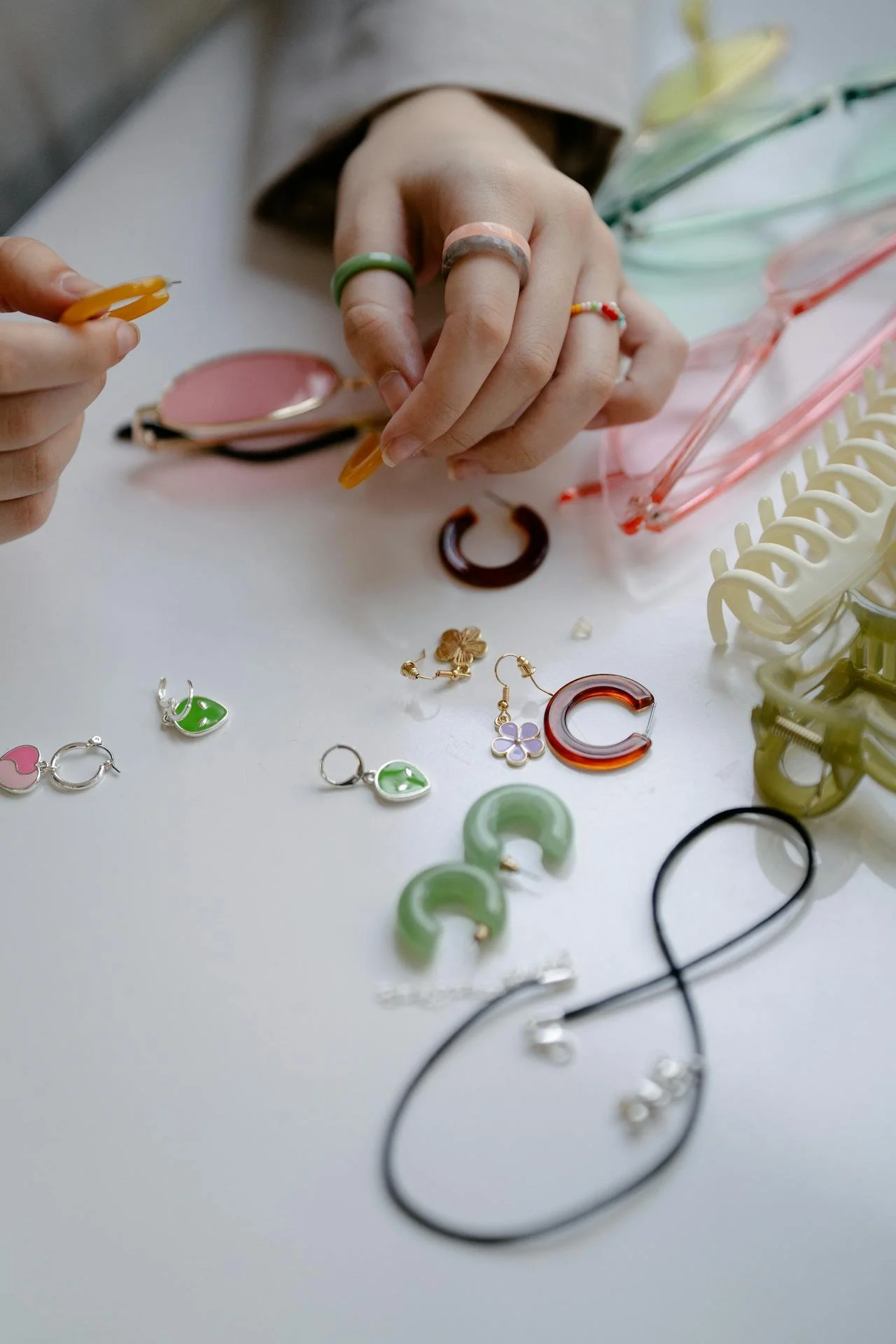How to Sell Jewelry Online: A Guide for Craft Entrepreneurs
Key Takeaways
There are many steps that go into starting a handmade jewelry business. There are also more limitations when you jump from making jewelry for fun, to jewelry business owner.
Before selling jewelry online you’ll need to pick your jewelry niche.
Next, take plenty of time to research competitors, pricing, products, and jewelry trends in order to find your place in the market.
Plan out your branding based on your ideal customer so when they find your shop, they feel like your jewelry was made just for them!
Design and create your first products. Take clear product photos so your customer gets a good look at what they are buying.
Decide where to sell your jewelry. List your jewelry items and customize your online shop.
Begin marketing your work based off of where your ideal customer spends their time.
Double down on what is working and scale your jewelry sales!
So, you’re wondering how to start a jewelry business but you don’t know where to begin? You’re in the right place! I’m assuming you’ve already tried to ChatGPT your way into a plan (and I’m guessing it spit out some generic, high level garbage). So if you’re ready to get some real advice on how to sell jewelry online while also getting paid for it, let’s break it down.
Decide on Your Jewelry Niche
Starting a jewelry business is no small feat…especially if you’re used to making and selling jewelry just for fun. Making the jump from designing jewelry as a hobby, to starting a jewelry business comes with a lot of creative restraint and many other necessary tasks you might not be too thrilled about.
However, the good news is that if you take the time to set up a solid foundation from the very beginning, you can still have a lot of creative flexibility. This is why it’s critical to get your niche right from the very start.
Having a specific niche within the jewelry industry is important because without it, you’re trying to sell all kinds of jewelry to all kinds of people (doesn’t that sound crazy overwhelming?). Your customers will be confused, you won’t stand out like you want to, and you won’t be able to create that magnetic pull for your ideal customer, because you won’t really have one.
I’m an artist too, so I get it – you have a million ideas for your handmade business. You want to make vintage inspired engagement rings, but also a line of necklaces in a more modern style, oh! and don’t forget those quirky and colorful charm bracelets you’ve been dying to design…if you’re running a business, you’ve got to get focused first!
“But how can I possibly choose just 1 niche?”
It’s actually not too hard once you get it all out on paper. Lucky for you I wrote a whole post on exactly how to find your craft business niche from start to finish! You can also download my free niche workbook inside the post to help you find your jewelry niche with my signature ‘Niche in 3’ system.
(And if you’d like more hand holding here, as well as throughout the entire process of starting and growing a handmade business, you can join us inside of Handmade & Paid where I sit down with you on a 1:1 call and we do this step together! )
Next, let’s move onto step number two which is…
Do Your Research
I know you just want to get all your jewelry supplies out and make something fabulous now that you finally have settled on one amazing niche, but I promise you, taking the time to do some research now will set you up for future success!!
So what exactly are we researching? Many, many things my friend, but here are the highlights:
Research other jewelry brands
Normally I recommend keeping your eyes on your own paper, but in the beginning, it’s really important to see what else is out there. This allows you to see where your new jewelry brand will fit in and how it can stand out! And you can stand out in plenty of ways too.
Look at other jewelry designer’s branding and products. Are shops similar to yours only selling necklaces? Or rings? Maybe there is an opportunity for you to sell necklaces AND bracelets in that same style to fill that gap.
Where are they selling their products? If you’re still wondering where to sell jewelry online, this could give you some clues about what’s working for other brands.
What about their imagery and overall vibe? If you only see very sleek and modern websites selling minimal jewelry at a higher price point, there could be a market for more funky, maximalist jewelry that is more high end. You won’t know this until you take the time to look around and see what’s already being sold.
Research supply costs and pricing
Pricing is obviously a very important part of the process too. When you’re looking at other jewelry sellers, make note of what they are selling their work for. Pricing handmade items is a bit of a balance between supplies, labor, and overhead, however, it gets a little trickier when perceived value gets factored in. That’s why it’s good to know what others are generally charging for similar jewelry items, and what their branding looks like.
Researching supply costs is also an essential step in your maker journey. You’ll want to be sourcing the best quality jewelry supplies at the lowest price possible so you can increase your profits on every piece of jewelry you’re selling.
Research your ideal customer
You might not think that this step is all that important, but it’s a major piece of the puzzle when it comes to designing, marketing, and selling jewelry online. I mean, how do you know what type of jewelry to sell if you don’t know who you’re making it for? (remember, you’re not just making what you feel like anymore!).
Understanding exactly who your ideal customer is makes every part of your business easier! You’ll know what products to make, where to sell them (wherever this person shops!), and how to capture their attention through your marketing. Decisions become much, much easier when you know and understand the person you’re selling to.
Research market trends
It’s up to you how much you follow yearly trends, but it’s good to keep an eye on general market, and what is popular. With a few simple tools, you can discover how popular certain products or jewelry trends have been. It’s great information to have at your fingertips as you build your brand. Google Trends is a great place to start if you’re curious.
Design Your Branding
Now that you have a pretty good idea of your jewelry niche, as well as where your business might fit into the market, it’s time to build your brand. While a lot of jewelry designers think of their branding as just their colors and logo, you should understand that branding for creative entrepreneurs goes so much deeper than this. But yes, it does include your colors and your logo too ;).
When figuring out how to sell jewelry online, you’ll need to consider every aspect of your brand, including the customer you’re trying to attract. You’ll want to make sure your branding is irresistible for your ideal customer and they feel like your jewelry was made just for them.
When your customer feels this way, you’ll have no problem making sales or getting repeat buyers. This is the power of getting your branding right!
As a quick overview, your branding consists of your business vision, mission, core values, your brand story and voice, visual identity, and any piece of marketing content you push out.
It’s quite the project, but once you create this playbook, you’ll never have to question if you’re making the right decision when it comes to your company again. You’ll have a roadmap to keep you on track.
Create Your First Jewelry Products
Finally, we’re getting to the good stuff! At this point, you have everything you need to build a solid initial product line. But where should you start?
First off, you’ll want to consider a few important things.
Will your products all be handmade? Or handcrafted? When selling jewelry online, you can either completely design and create pieces by hand, or you can source existing pieces and create designs from those. For example, if you’re casting, silversmithing, and setting gems in your handmade jewelry business, this is very detailed work.
Because of this, you may want to work off a ‘made to order’ business model. In this type of model, you create one piece of handmade jewelry, for example, a necklace, take photos of it, then list it on your website for sale.
Within the description you should note that this item is ‘made to order’, and after payment, it will take x amount of days to create and ship out. This way, your customer is not surprised with the wait time.
The beauty of this is that you can just have a photo of your product to make sales. You don’t need to keep inventory, you save space, as well as money. This also works great for custom product listings. You can create one example, then have custom options available.
When it comes to handcrafted jewelry, you’re sourcing beads, chain, clasps, etc, and piecing them together into a new design. Since this takes less time, you may just want to create a bunch of product ahead of time and have it ready to go.
Another very important thing to consider – if you are at all planning to sell jewelry wholesale in the future, you’ll need to account for that in your pricing now so you can actually make it profitable later.
As you plan out your initial product line, you’ll want to choose a healthy, but not too overwhelming number of jewelry items to launch. Use your best judgement here, but 10 products is a great number to shoot for. You want enough pieces that people have options, but not so many that your customer gets confused or can’t make a decision.
Once you know what products you want to launch with, the last step is that you need to make sure that your line is cohesive. There should be a common thread that connects every product. Not only will this make you look more like a professional brand, but you’ll become more memorable as well.
You can create cohesion in lots of ways too. Using similar colors, the same type of metal, similar stones or gems. This also relates to your product photos which we’ll talk about next.
Take Product Photos
After all that hard work, you’ll want to make sure your product photos are on point! You’ll need to educate yourself on what types of photos you should include in each listing so that your customers get a complete picture of exactly how your jewelry will look when they open up their purchase at home.
Consider lighting, scale, and of course, your branding! Your product photos should always reflect your brand. Keep things cohesive by using similar backgrounds for all your products as well.
Don’t worry about having a fancy camera or the perfect location to create the most amazing photos…you can still create great product photos with your phone! Your goal is to make your product shine and be tempting to your customer. You don’t need expensive gear or the perfect setting to achieve that.
Clear images of your handmade jewelry is the most important thing to be concerned about. Show one main photo, one detail/close up photo, one lifestyle photo, one photo showing scale, and a video if you really want to shine. This essential mix of photos will answer any question your potential buyer might have, clearing the way for many sales to come!
List Your Jewelry Online
Selling jewelry online, especially as a non-tech friendly person may seem intimidating…I mean how are people going to find you anyway? We’ll cover that next, but for now, you need to focus on getting a ‘first draft’, functional shop up and running.
I say ‘first draft’ because so many artists and crafters waste time here. Yes, you want your online jewelry shop to be stunning, with the most sparkly photos, and the most persuasive descriptions so it sells your jewelry on autopilot…that day may come, but it ain’t today lol.
Let’s just get it good enough so that you can start driving traffic and make some quick sales…you can always come back and improve it!
Now that we’ve had that hard lesson, you might be wondering exactly where to sell jewelry online? I’m often asked if it’s better to sell jewelry on a craft marketplace, versus on your own website. Since I have strong opinions on this and I’ve already covered this in a separate post, you can learn about some marketplace sites like Etsy, as well as Etsy alternatives here.
No matter what you decide, you need to be on the right platform for your work, your goals, and your brand. So, you’ll need to determine for yourself what that means for you. Once you’ve selected your platform, you can upload and list all those beautiful product photos you’ve taken, and you’ll be on your way.
Start Sharing Your Work
It’s time to put your big girl pants on because this part is not for the faint of heart. You’re going to start sharing your work, all day, every day, with your friends, with the public, and pretty much anyone who will listen!
When you are daydreaming about becoming a profitable craft solopreneur, you probably imagine yourself huddled up in a cute art studio making jewelry all day long. While that is a very fun part of it, you should also understand that especially at the beginning, after you produce your initial product line, 75% of your time should be spent marketing that work…not making new products.
For a lot of makers, this can be very vulnerable and scary. But promoting your work is an essential part of building a profitable jewelry business. Right now, no one knows you exist! So let’s talk about a few ways you can start getting more eyeballs on your jewels.
Email Newsletter
Let’s start with my favorite – your email newsletter. I know, it doesn’t seem all that exciting but if you’re wanting to actually make money when you sell jewelry, it cannot be overlooked. You’ll be leaving money on the table without it!
Your email list is one of the few places where you can really connect deeply with your followers. Hearing from you regularly, whether you’re promoting a new jewelry item or just sharing some behind the scenes, is what it takes for someone to go from casual follower, to loyal repeat buyer.
How does that happen? When you share little snippets of your world alongside your art, people start to relate to you. They become more invested. You stay top of mind. And then, if suddenly they need a gift or have some extra money to splurge…guess what? They’ll think of your jewelry first.
To learn more on why your craft business needs an email list, check out my detailed post here!
Social Media
Social media is of course another way you can get more people to find out about your jewelry business. I know a lot of handmade artists use social media as their main channel of promoting their work as they learn how to sell jewelry online. While it definitely expands your reach, the algorithm can be a major problem.
As you probably have figured out, just because you share a photo of your newest bracelet on your social media profile, doesn’t mean every single one of your followers will see it. In fact, MOST of them won’t see it at all, thanks to the algorithm. This is where having an email list really makes a difference.
Using social media to reach new people with the goal of getting these people on your email list is the best plan of action for growing a sustainable and engaged audience of buyers. When you combine the two, you get the best of both worlds! I talk about this more in depth in my post about social media marketing for artists.
Influencer Marketing
One of the newest forms of marketing your jewelry has to be influencer marketing. This works particularly well if you are selling jewelry because it’s easy to gift products to those with larger audiences than you. However, when working with influencers, you’ll want to have a clear agreement of their required actions after they accept your gift.
This method is a great way to get your jewelry out quickly and easily in front of a lot of people as long as you make sure to do your customer research and pick the right influencers to promote your brand. You’ll also want to be clear on your end goal here so that over time, you can determine if this type of marketing is working well for you.
Craft Shows and Markets
The tried, and sometimes true method of slapping together a folding table, throwing a sheet over it, and pushing your crafts onto anyone who comes in your near vicinity is always an interesting option! Craft shows and markets are one way to sell your work, but they can also be a way of marketing it too.
While I think it can be very helpful for brand new craft entrepreneurs to try out a craft fair here and there as they get started, in general, it’s hard to make a predictable income from craft shows alone.
Live selling events are generally a crapshoot. Your success hinges on SO many factors, including the weather, the crowd that day, competing weekly events, and even holidays. If one thing is off, you might not make a single sale after everything you did to prepare. This doesn’t always happen, I’m just saying it’s risky.
In my opinion (I sold at shows regularly for years!), if craft shows are just one of your income streams and you paying your bills or bankrupting your art business is not a problem if you don’t do well at the show, then by all means, knock yourself out.
However:
Craft shows are amazing for networking, getting new collaborations with other artists (so much money to be made this way!), for getting clear feedback on your products from shoppers, and getting scouted by shops looking to buy big bulk orders.
Personally, I never did great sales-wise at most shows, but I did make invaluable connections I am still benefiting from today, had my work sold in multiple shops thanks to a few wholesale orders, and collaborated with a craft kit company to have my very own printmaking kit produced. Plus, I gained tons of new artsy friends and followers.
So you weigh the pros and cons to see if craft markets are right for you, whether for selling, marketing, or both!
Scale Your Jewelry Business
Now that you have some momentum in your business, it’s time to double down on what’s working. But first, take time at least once a month to step back and look at your business. Your jewelry line, the branding, your sales and profits, your marketing. Check in with yourself…what’s working well?
When you take the time to reflect on your ongoing hard work regularly, it becomes easier to see where you can tweak things to improve them. Run the numbers too. Sometimes you might not realize how successful a particular product is doing until you pull out the calculator.
For example, you might have a very expensive necklace that sells pretty well, and you assume it’s responsible for the majority of your income. But after doing the math, it might turn out that your popular earring sets are the actual MVP. This will help you understand what products to make next, and how to promote each.
Scaling a jewelry brand will require different skills and work than it did to get you to where you are now. After you do the step above and figure out what’s working, you’ll easily be able to see how you can start making more sales.
If you know your best-selling jewelry pieces, you can make different variations of these products. Or you can introduce a limited edition seasonal colorway for these products…see how this can be fairly simple?
This is also a great time to expand into new marketing channels like wholesale if you haven’t already. If you’re selling in small jewelry boutiques, it might be time to start reaching out to larger stores. Or maybe you can sign up for a trade show to get in front of potential buyers.
You’ll have many options when it comes to scaling, but the direction you take will depend on what’s already been going well for you (if you want the path of least resistance of course ;)).
Selling jewelry online for a living
If you’ve been wondering how to start a jewelry business and just haven’t known where to begin, I hope this post has given you a little clarity! Selling jewelry online can be simple if you have a clear goal and have the right support to keep you on track as you grow and scale.
Whether you want to sell jewelry or sell another craft online in order to make a part time or full time income, it’s critical to have either a mentor, a community, or ideally both to guide you to success.
You can start a handmade business and make sales on your own of course; however, with the right people around you, you will make sales faster, move more strategically, and get pushed much farther creatively than you would on your own.
This is because we as humans like to stay in our comfort zone. Working with a craft business coach will push you out of your bubble, and you’ll achieve so much more than you can imagine.
As one of my Handmade & Paid clients, Jackie said, “Since working with Dani, I feel more inspired, focused and motivated.”…and this is the energy you need to keep moving forward every day.
Because building a profitable and scalable jewelry business from scratch is not achieved in days or weeks…it takes years of consistent action and small steps forward.
If you’re ready to stop letting your dream just be a dream, and want to start getting paid for your work, it’s time to get serious and prove to yourself that you’re really going to make this happen!
Book a free Creative Clarity Call with me today and take the first step!
Frequently Asked Questions
-
Selling handmade jewelry can be done in a variety of ways, however, to get started, you’ll need some initial product, a place to sell, great product photos, a way to collect payments, and a marketing plan. Simple ;).
-
Once you establish who your ideal customer is, you’ll have a more clear idea of where you should be selling online in order to get in front of them. There is no ‘best platform’, your customer should dictate where you plan to sell online.
-
The amount of profit you create from selling your handmade jewelry online will depend on how you price your pieces, how much you spend on supplies, and how many sales you are making. You may not be profitable right away, but once you get the hang of it, selling jewelry online can be extremely profitable.













